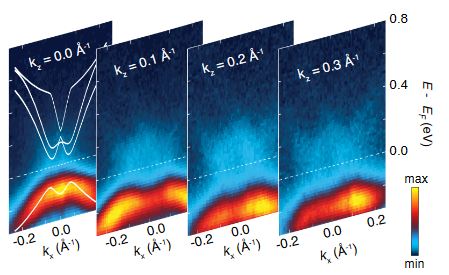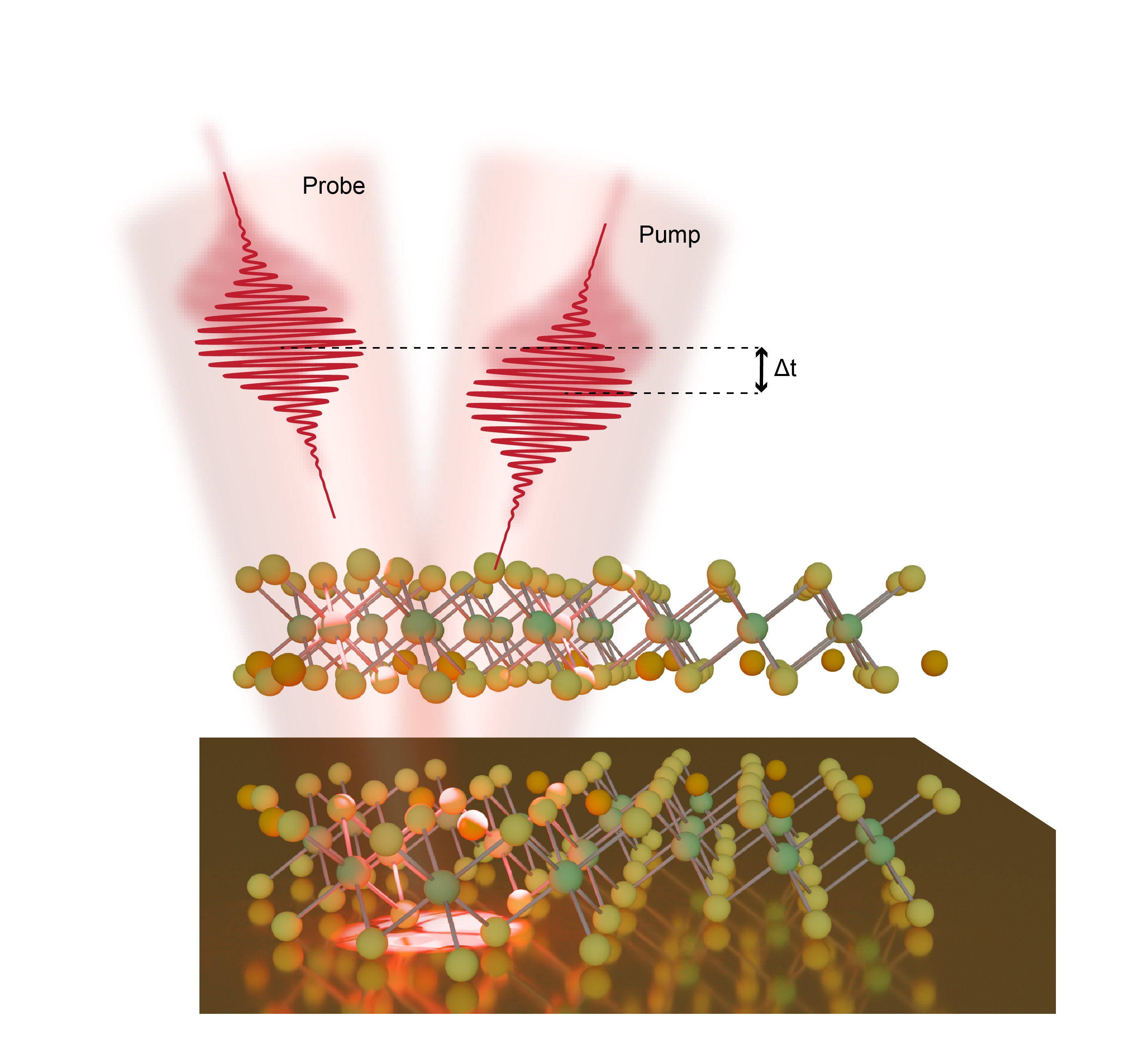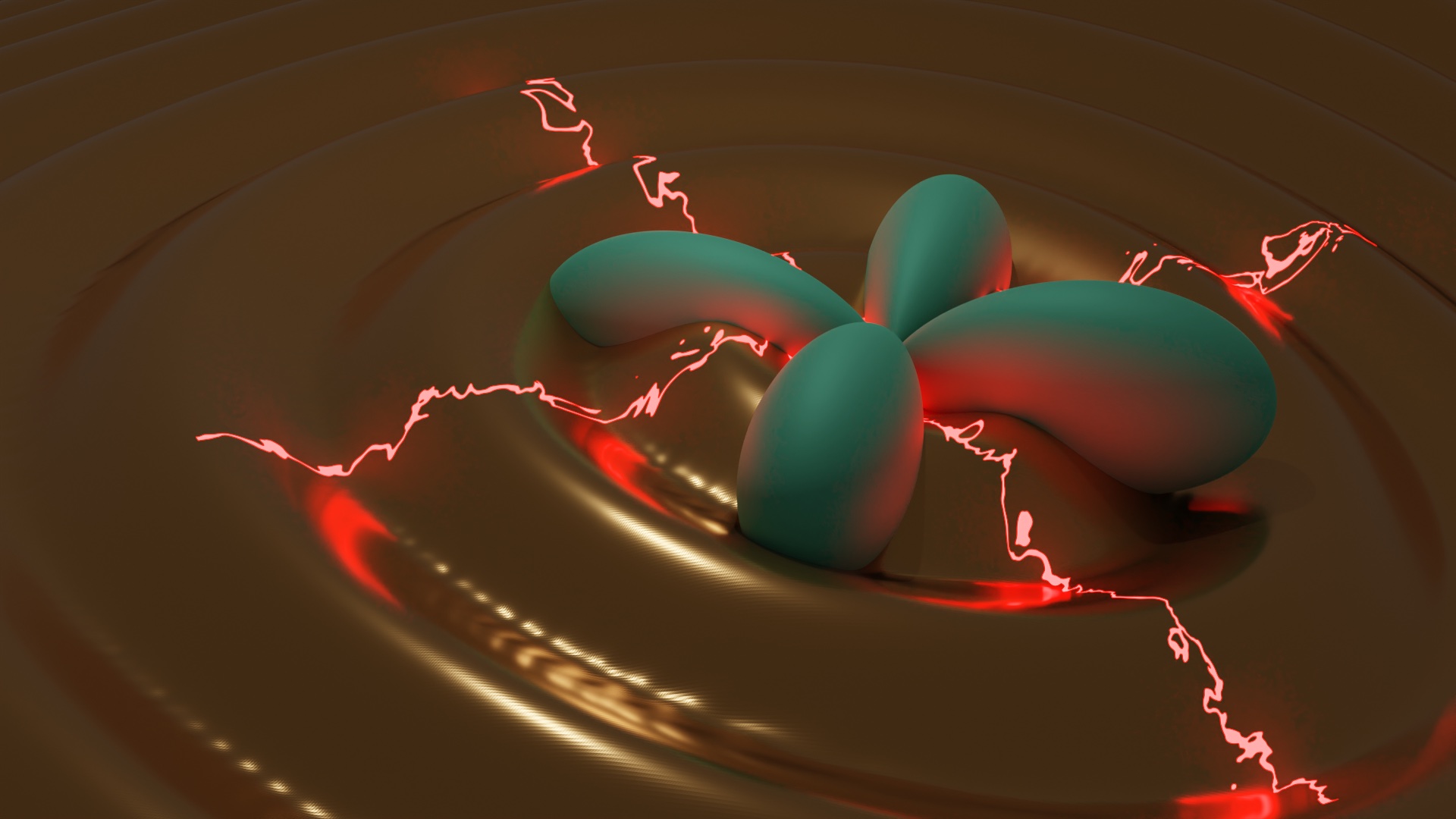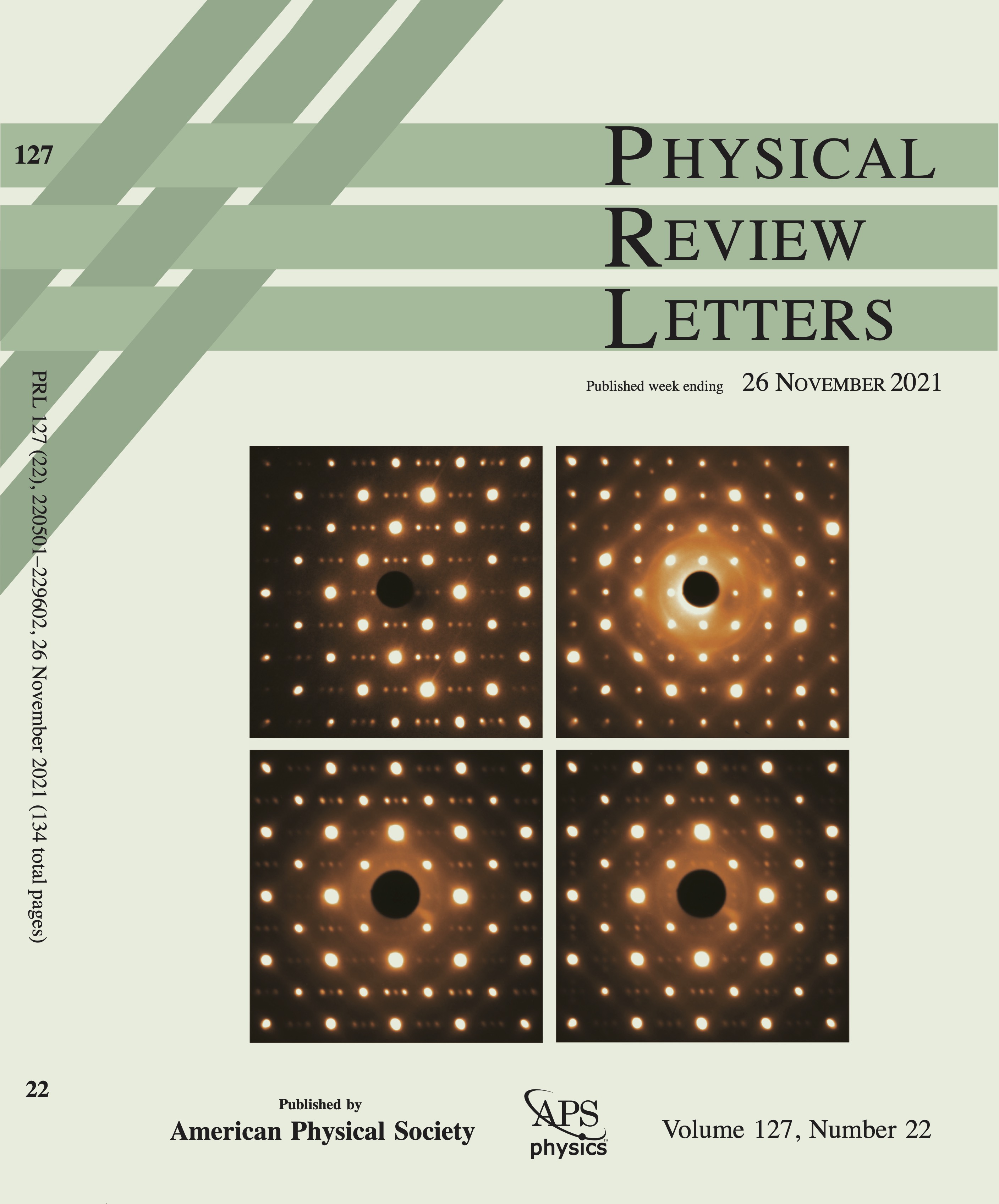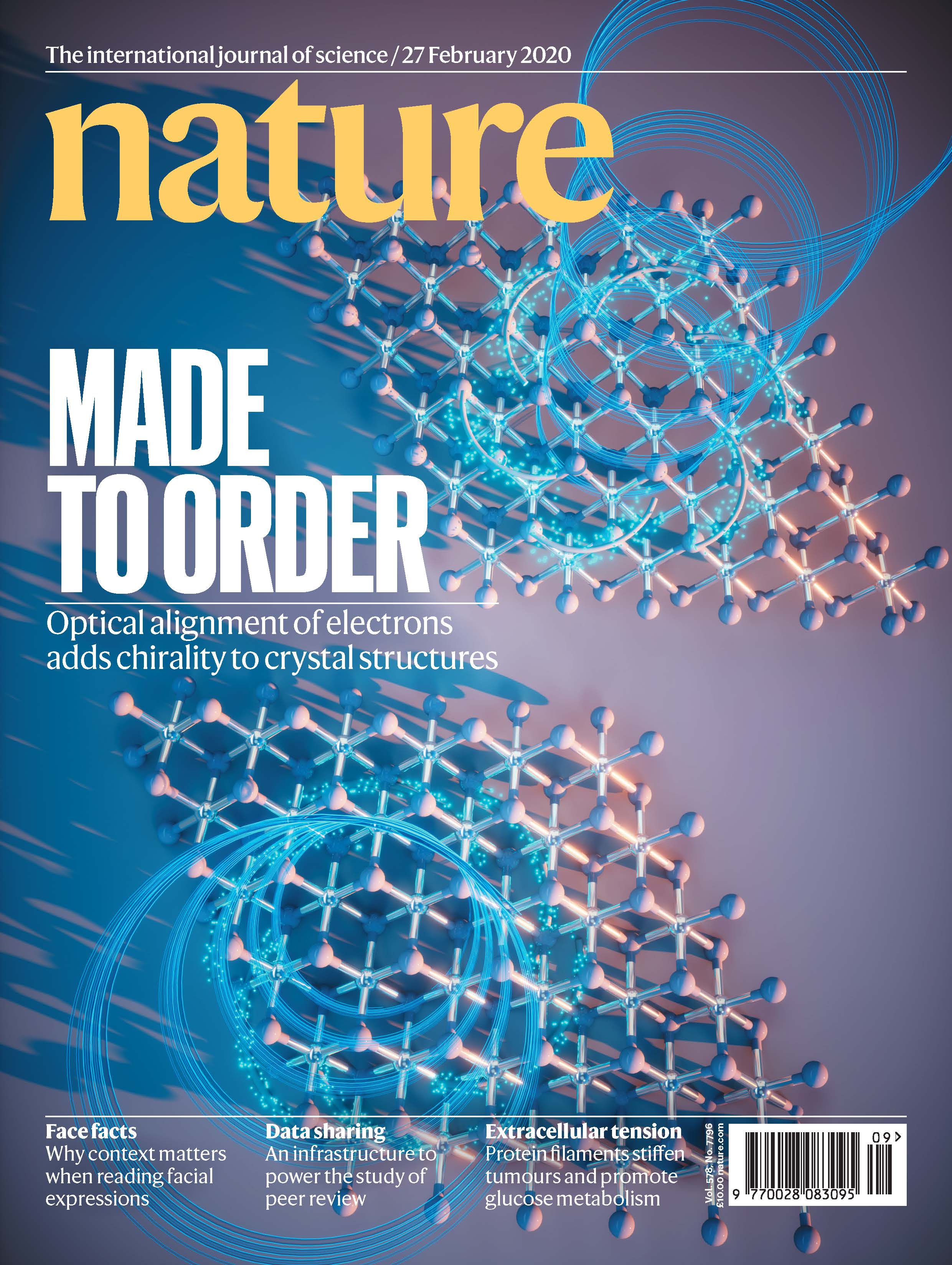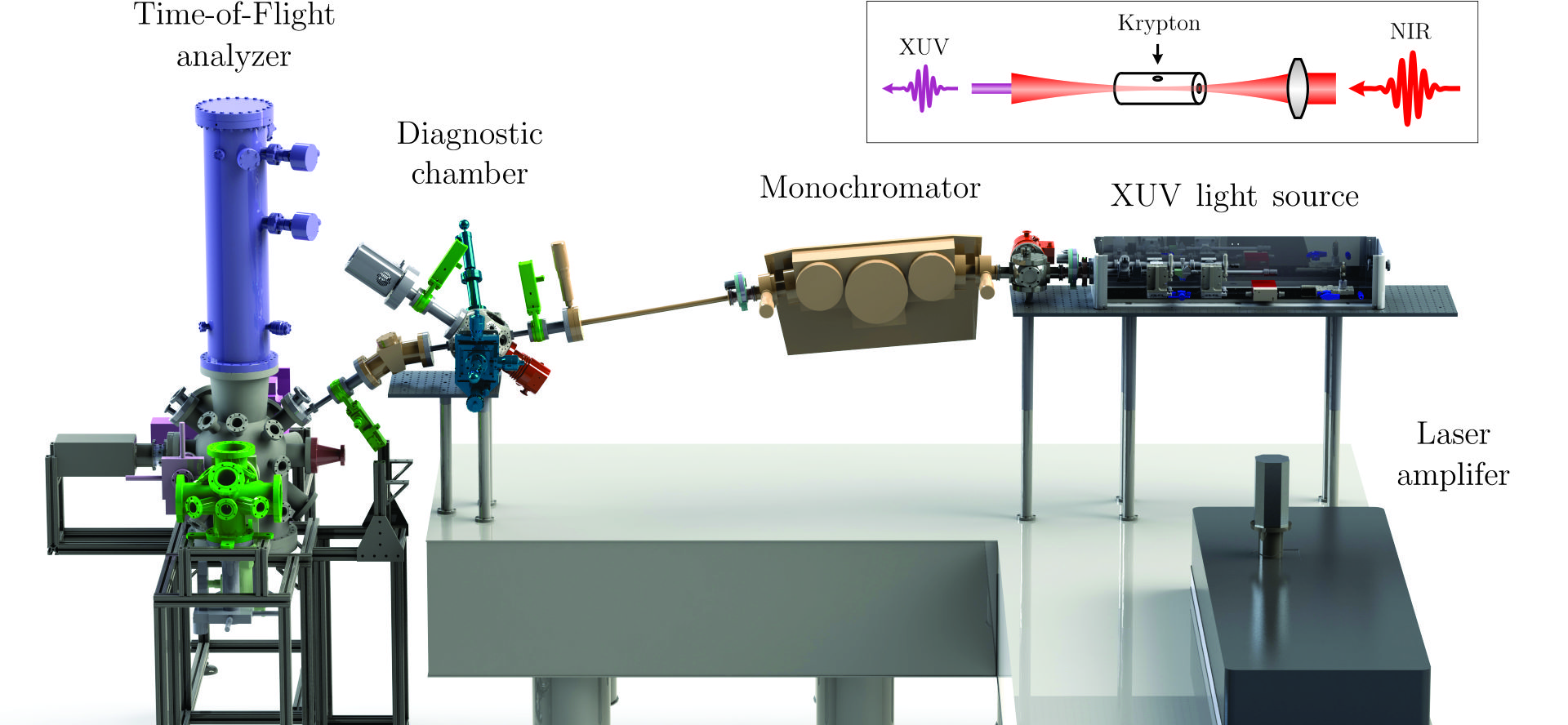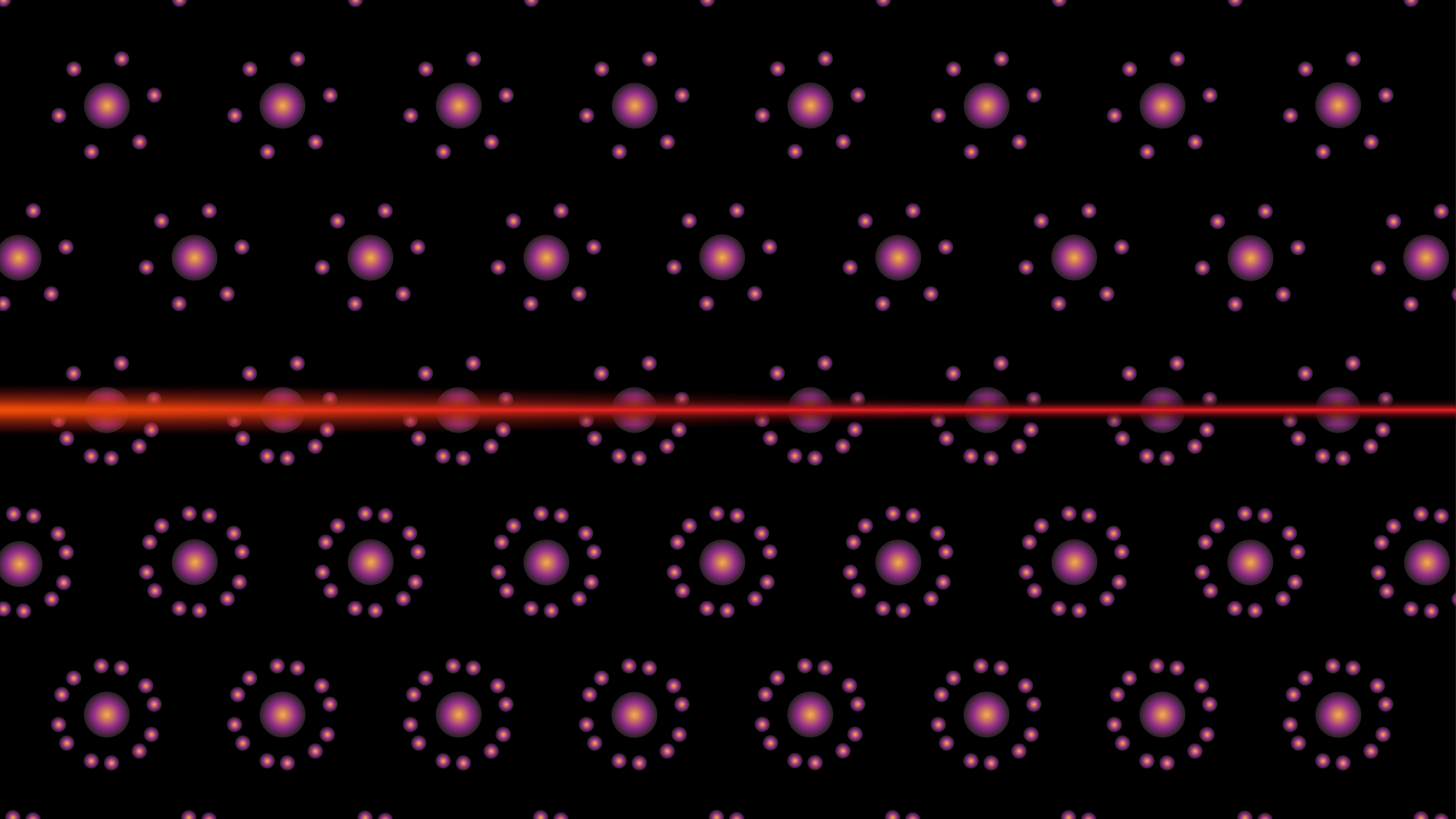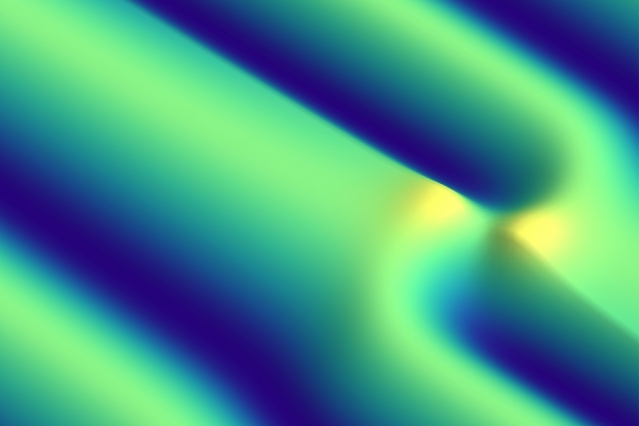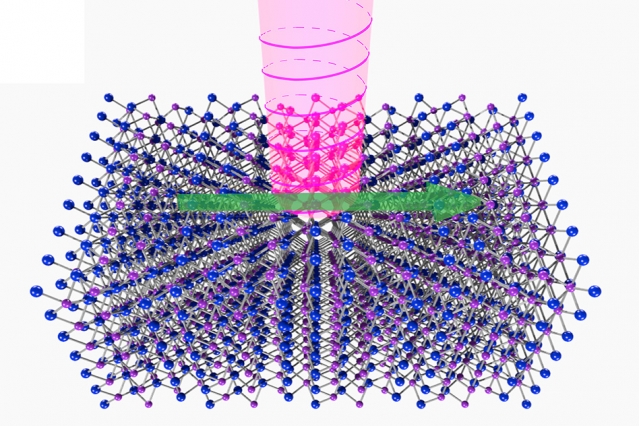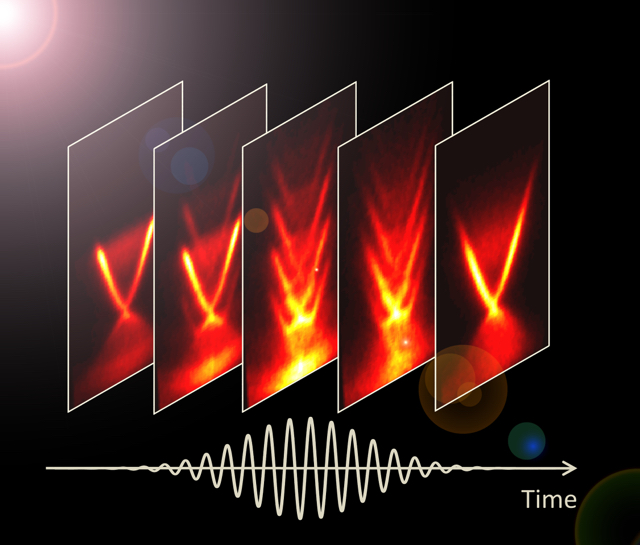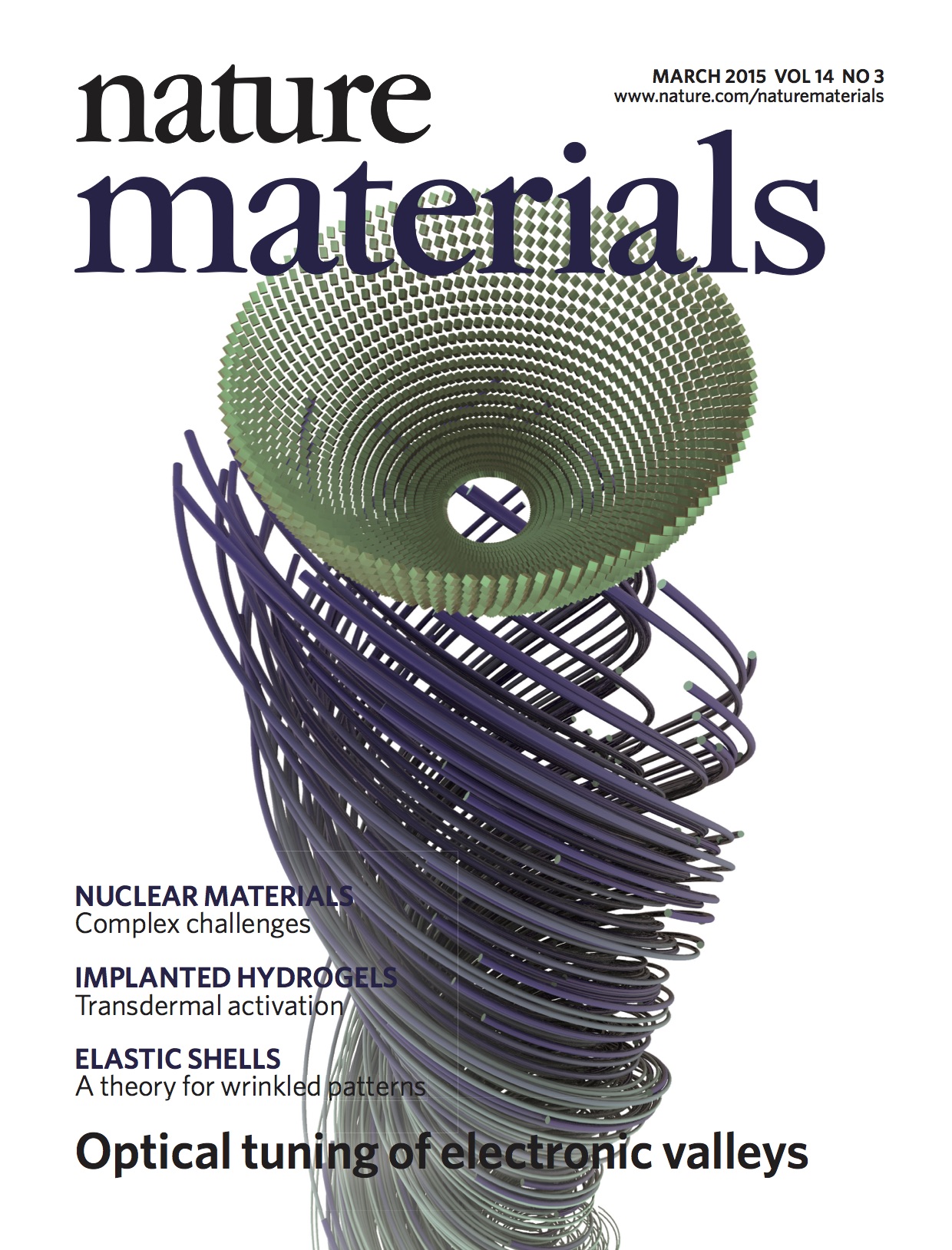
![]()
|
NEWS |
Techniques |
Materials |
Selected recent papers |
Selected Recent Papers
Terahertz field-induced metastable magnetization near criticality in FePS3
Controlling the functional properties of quantum materials with light has emerged as a frontier of condensed-matter physics, leading to the discovery of various light-induced phases of matter, such as superconductivity, ferroelectricity, magnetism and charge density waves.
However, in most cases, the photoinduced phases return to equilibrium on ultrafast timescales after the light is turned off, limiting their practical applications.
Here we use intense terahertz pulses to induce a metastable magnetization with a remarkably long lifetime of more than 2.5 milliseconds in the van der Waals antiferromagnet FePS3.
The metastable state becomes increasingly robust as the temperature approaches the antiferromagnetic transition point, suggesting that critical order parameter fluctuations play an important part in facilitating the extended lifetime. By combining first-principles calculations with classical Monte Carlo and spin dynamics simulations, we find that the displacement of a specific phonon mode modulates the exchange couplings in a manner that favours a ground state with finite magnetization near the Néel temperature.
This analysis also clarifies how the critical fluctuations of the dominant antiferromagnetic order can amplify both the magnitude and the lifetime of the new magnetic state. Our discovery demonstrates the efficient manipulation of the magnetic ground state in layered magnets through non-thermal pathways using terahertz light and establishes regions near critical points with enhanced order parameter fluctuations as promising areas to search for metastable hidden quantum states.
Dynamical decoding of the competition between charge density waves in a kagome superconductor
The kagome superconductor CsV3Sb5 hosts a variety of charge density wave (CDW) phases, which play a fundamental role in the formation of other exotic electronic instabilities.
However, identifying the precise structure of these CDW phases and their intricate relationships remain the subject of intense debate, due to the lack of static probes that can distinguish the CDW phases with identical spatial periodicity.
Here, we unveil the out-of-equilibrium competition between two coexisting 2×2×2 CDWs in CsV3Sb5 harnessing time-resolved X-ray diffraction.
By analyzing the light-induced changes in the intensity of CDW superlattice peaks, we demonstrate the presence of both phases, each displaying a significantly different amount of melting upon excitation.
The anomalous light-induced sharpening of peak width further shows that the phase that is more resistant to photo-excitation exhibits an increase in domain size at the expense of the other, thereby showcasing a hallmark of phase competition. Our results not only shed light on the interplay between the multiple CDW phases in CsV3Sb5, but also establish a non-equilibrium framework for comprehending complex phase relationships that are challenging to disentangle using static techniques.
The spontaneous symmetry breaking in Ta2NiSe5 is structural in nature
The excitonic insulator is an electronically driven phase of matter that emerges upon
the spontaneous formation and Bose condensation of excitons. Detecting this exotic
order in candidate materials is a subject of paramount importance, as the size of the
excitonic gap in the band structure establishes the potential of this collective state for
superfluid energy transport. However, the identification of this phase in real solids is
hindered by the coexistence of a structural order parameter with the same symmetry
as the excitonic order. Only a few materials are currently believed to host a dominant
excitonic phase, Ta2NiSe5 being the most promising. Here, we test this scenario by
using an ultrashort laser pulse to quench the broken-symmetry phase of this transition
metal chalcogenide. Tracking the dynamics of the material's electronic and crystal
structure after light excitation reveals spectroscopic fingerprints that are compatible
only with a primary order parameter of phononic nature. We rationalize our findings
through state-of-the-art calculations, confirming that the structural order accounts for
most of the gap opening. Our results suggest that the spontaneous symmetry breaking
in Ta2NiSe5 is mostly of structural character, hampering the possibility to realize
quasi-dissipationless energy transport.
Coherent detection of hidden spin-lattice coupling in a van der Waals antiferromagnet
Strong interactions between different degrees of freedom lead to exotic phases
of matter with complex order parameters and emergent collective excitations.
Conventional techniques, such as scattering and transport, probe the amplitudes
of these excitations, but they are typically insensitive to phase. Therefore, novel
methods with phase sensitivity are required to understand ground states with phase
modulations and interactions that couple to the phase of collective modes. Here,
by performing phase-resolved coherent phonon spectroscopy (CPS), we reveal a
hidden spin-lattice coupling in a vdW antiferromagnet FePS3 that eluded other
phase-insensitive conventional probes, such as Raman and X-ray scattering. With
comparative analysis and analytical calculations, we directly show that the magnetic
order in FePS3 selectively couples to the trigonal distortions through partially filled
t2g orbitals. This magnetoelastic coupling is linear in magnetic order and lattice
parameters, rendering these distortions inaccessible to inelastic scattering techniques.
Our results not only capture the elusive spin-lattice coupling in FePS3 but also establish
phase-resolved CPS as a tool to investigate hidden interactions.
Unconventional Hysteretic Transition in a Charge Density Wave
Hysteresis is a history-dependent response of a system when subjected to an external perturbation. This phenomenon is ubiquitous in physics, biology, and even economics. In condensed matter, it underlies a large number of phase transitions, leading to everyday applications ranging from memory devices to functional polymers. In this work, we report an unconventional hysteretic transition in a quasi-2D material, EuTe4. By combining transport, photoemission, diffraction, and X-ray absorption measurements, we observe that the hysteresis loop has a temperature width of more than 400 K, setting a record among crystalline solids. The transition has an origin distinct from known mechanisms, lying entirely within the incommensurate charge density wave (CDW) phase of EuTe4 with no change in the CDW modulation periodicity. We interpret the hysteresis as an unusual switching of the relative CDW phases in different layers, a phenomenon unique to quasi-2D compounds that is not present in either purely 2D or strongly coupled 3D systems. Our findings challenge the established theories on metastable states in density wave systems, pushing the boundary of understanding hysteretic transitions in a broken-symmetry state.
Magnetically brightened dark electron-phonon bound states in a van der Waals antiferromagnet
Strong coupling between different degrees of freedom can hybridize elementary excitations into bound states with mixed character. Correctly identifying the nature and composition of these bound states is key to understanding their ground state properties and excitation spectra. In this work, we discover a bound particle consisting of a phonon and electronic transition in a van der Waals antiferromagnet, NiPS3. This hybrid particle is optically dark at high temperatures, and becomes optically accessible only when the magnetism sets in. Our approach directly demonstrates the interaction strength between its constituents to be the highest known among 2D magnets. By leveraging multimodal ultrafast spectroscopy with high time resolution, we identify the nature of this bound state as a phonon and electronic transition among d-orbitals of a nickel ion. Our findings presents NiPS3 as a platform to study strong interactions between different degrees of freedom, and opens new opportunities for coherent control of quantum materials.
Role of Equilibrium Fluctuations in Light-Induced Order
In the past few years, a slew of experiments has shown that ultra-short laser pulses can trigger the formation of transient states of matter that are otherwise inaccessible in equilibrium. However, it remains controversial how order emerges despite the tremendous energy deposited by a laser. In this work, we studied a photo-induced charge density wave - an electronic analogue of a crystal, and we found that the nonequilibrium density wave created by a light pulse shares some key characteristics of equilibrium fluctuations of the density wave near the critical temperature. Their striking parallels hint at a positive correlation between the strength of a light-induced order and the amplitude of its fluctuations in equilibrium, which is verified in our model calculations. Our results suggest that in order to search for "hidden" states out of equilibrium, one should examine systems with pronounced fluctuations in equilibrium.
Discovery of the soft electronic modes of the trimeron order in magnetite
Magnetite, the oldest magnetic material known to humans, exhibits one of the most complex phase transformations found in solids. Known as the Verwey transition, it involves a change from a metal to an insulator, a rearrangement of the lattice structure, and a complicated ordering of charges, all occurring together below 125 K. Despite decades of experimental and theoretical research, a complete description of the mechanism behind the Verwey transition is still lacking. In this work, we discover electronic collective waves in magnetite that freeze at the transition temperature. These waves are observed experimentally using ultrashort laser pulses in the extreme infrared. A theoretical analysis shows that the electronic waves correspond to a sliding motion of "trimerons," the three-atom building blocks of magnetite's charge order. This finding is the first report of any frozen waves in magnetite and therefore is important for understanding the origin of its exotic phase transition.
Spontaneous gyrotropic electronic order in a transition-metal dichalcogenide
The observation of chirality is ubiquitous in nature. A primary example is our left and right hands. In this sense, it seems that, intuitively, the population of opposite chiralities is expected to be balanced. However, at fundamental levels, the population of opposite chiralities is surprisingly asymmetric. In solid state quantum materials, chirality can be defined in a similar sense: The quantum-mechanical electrical charge distribution in the crystal lattice exhibit a chirality. However, such electronic charge chirality has been very rare. In this work, we study the transition metal dichalcolgenide semimetal TiSe2. We observe a very rare gyrotropic order: The system is originally achiral. But below a critical temperature, the quantum-mechanical electronic charge distribution is spontaneously ordered, leading to the development of an electronic chirality. We further found that shining circularly polarized light across the critical point can help to control the chirality (chiral induction). Our observation of the rare gyrotropic order is fundamental interest. The chiral induction provides a new way of optical control over electronic chirality in quantum materials.
Light-induced charge density wave in LaTe3
Increasing energy is typically associated with increasing disorder. For example, when energetic laser light hits a material, any long-range order in its ground state is expected to weaken or be destroyed. However, we recently demonstrated the opposite in LaTe3, a layered compound that hosts a unidirectional charge density wave. While the original density wave is melted by light, a new charge density wave emerges, which does not exist in equilibrium. The new density wave lasts for a few picoseconds and it disappears at the same time as the original density wave recovers, suggesting a strong competition between the two orders. This study lends us insight into phase competition in a highly nonequilibrium regime, and it demonstrates a new way of creating ordered state of matter by light.
Dynamical slowing-down in an ultrafast photoinduced phase transition
Critical slowing down is a recurrent motif of phase transitions in nature. In this work, we extended its phenomenology from an equilibrium to an out-of-equilibrium context. Using time-resolved electron diffraction and optical spectrocopy, we clocked the light-induced suppression of a charge-density-wave in LaTe3, and observed that it takes the longest time to suppress the ordered state at the nonequilibrium critical point. Our experiments suggest the presence of critical slowing down even in a highly nonequilibrium regime, offerring us insight into the general principles behind phase transitions that proceed in the sub-picosecond timescale.
Time-resolved XUV ARPES at MIT
The electronic band structure of materials can be mapped out using angle-resolved photoemission spectroscopy (ARPES) and, when carried out using a time-resolved laser capability, it provides invaluable insights into the electron dynamics on femtosecond timescales. However, it has been difficult to access high momenta electrons with narrow energy resolution via laser-based ARPES. Here, we develop a new tabletop ARPES technique using tunable and high resolution XUV laser pulses. Our technique enables full access to the electronic band structure of all materials with narrow energy resolution on femtosecond timescales.
Ultrafast manipulation of mirror domain walls in a charge density wave
In this study, we have demonstrated a surprisingly simple way of flipping the charge density wave (CDW) in 1T-TaS2 from one state into another, and then back again, with single pulses of laser light.
At room temperature, there are two degenerate configurations of the CDW in T-TaS2 (known as α and β states), but only one exists thermodynamically.
With a single femtosecond pulse, we can write β-domain into an α-only sample. Remarkably, we can reverse the process and remove the β-domain with another pulse.
This switching behavior is similar to what happens in magnetic data storage materials, and making the switch with laser light could offer a new way to read and write information in next-generation data storage devices, among other unprecedented applications.
Evidence for topological defects in a photoinduced phase transition
The way that ordinary matter undergoes a phase transition, such as melting or freezing, has been studied in great detail.
In this experiment, we have observed that when a phase change is triggered by using intense pulses of laser light, instead of by changing the temperature, the process occurs very differently.
Specifically, when the laser induces a phase transition in the charge density wave of LaTe3, we observed that topological defects were being generated.
Employing three state-of-the-art techniques working at sub-picosecond timescale - ultrafast electron diffraction, transient optical spectroscopy, and time- and angle-resolved photoemission spectroscopy - we found that the melting and reformation of the density wave is dictated by the presence of these topological defects, in total contrast to what would be observed by just turning up the temperature.
These results pave the way forward for understanding phase transitions in a highly nonequilibrium regime and for the optical manipulation of such defects in future optoelectronic devices.
Direct optical detection of Weyl fermion chirality in a topological semimetal .
Three types of fermions play a fundamental role in our understanding of nature: Dirac, Majorana and Weyl. While Dirac fermions (in their massive form) naturally describe the electrons in regular metals that conduct electricity. The latter two are unconventional particles that can give rise to strange and fundamentally new physics. In 1929, Hermann Weyl theoretically discovered a new fermionic particle, the Weyl fermion, which moves at the speed of light and, at the same time, spins about its direction of motion. Weyl found that this peculiar property means that the fermion must attain a definitive chirality, which is determined by the handedness of the spinning during its motion. Despite having played a crucial role in the development of the Standard Model, Weyl fermions have never been observed as a fundamental particle in particle physics. However, recently, researchers found that conduction electrons in certain unconventional metals can organize in a strange way so that their collective motion mimics the behavior of Weyl fermions. These metals are called the Weyl semimetals. Because of the existence of Weyl fermions, they are believed to show a range of novel physical properties.
In this study, a group of experimentalists led by Professor Gedik and Professor Jarillo-Herrero in the physics department of MIT showed that a Weyl semimetal material tantalum arsenide (TaAs) exhibits an interesting optoelectronic property called circular photogalvanic effect. Essentially, the researchers found shining circularly polarized light in the mid-infrared regime leads an electrical current on their TaAs samples. What�s more, the direction of the electrical current can be switched by changing the light polarization from left-handed to right-handed. From a fundamental research point of view, their findings revealed a crucial yet previously-unobserved property of this newly discovered phase of matter, i.e., the chirality of the Weyl fermions in the Weyl semimetal TaAs crystal. From a practical point of view, the light-induced electrical current appears to be very large, suggesting promising applications in mid-infrared photodetection as well as light harvesting (these can be expanded during the interview).
Large, valley-exclusive Bloch-Siegert shift in monolayer WS2 .
Coherent interaction with off-resonance light can be used to shift the energy levels of atoms, molecules, and solids. The dominant effect is the optical Stark shift, but there is an additional contribution from the so-called Bloch-Siegert shift that has eluded direct and exclusive observation in solids. We observed an exceptionally large Bloch-Siegert shift in monolayer tungsten disulfide (WS2) under infrared optical driving. By controlling the light helicity, we could confine the Bloch-Siegert shift to occur only at one valley, and the optical Stark shift at the other valley, because the two effects obey opposite selection rules at different valleys. Such a large and valley-exclusive Bloch-Siegert shift allows for enhanced control over the valleytronic properties of two-dimensional materials.
Selective scattering between Floquet-Bloch and Volkov states in a topological insulator.
Solid-state systems driven periodically by light are promising platforms to realize novel quantum states of matter. In this case, photons coherently interact with Bloch electrons in the solid to generate hybrid states known as Floquet-Bloch states. Similarly, light also couples to free electrons near the surface of the solid to create Volkov states. In this work we use time and angle resolved photoemission spectroscopy (Tr-ARPES) on the topological insulator Bi2Se3 to quantify the scattering between Floquet-Bloch and Volkov states. We find that the interaction between the two is strongly dependent on the initial electron momentum. More importantly, by controlling the polarization of the driving electric field, we can negate Volkov states so as to generate pure Floquet-Bloch states. This work establishes a systematic path for the coherent manipulation of solids via light-matter interaction.
Valley-selective Optical Stark Effect in Monolayer WS2.
Monolayer semiconductors such as WS2 have two different valleys in their electronic band structures. Their corresponding energy gaps are normally locked in equal magnitude.
Separating these valleys in energy is of great interest because it would allow for control in valleytronic applications to carry information.
In this work, we show that circularly polarized light can be used to shift the energy of one valley but not the other by means of the optical Stark effect.
Semiconducting-to-Metallic Photoconductivity Crossover and
Temperature-Dependent Drude Weight in Graphene.
We have demonstrated the ability to control the way light influences the conductive properties of graphene by electrically tuning the number of electrons in the material.
Graphene is a single atomic layer of carbon with remarkable optical and electronic properties with potential for future device applications.
We showed that an intense incident light pulse can either increase or decrease the electrical conductivity of graphene, depending on how many electrons are initially in the material.
By using ultrashort laser pulses, modulation of conductivity can be controlled in one trillionth of a second.
This work also revealed that the conducting capacity of graphene depends on temperature in a manner distinct from that of conventional metals or semiconductors,
due to the unique crystal symmetry of this two-dimensional carbon material. These results may potentially be useful for developing next-generation optoelectronic devices using graphene.

Observation of Floquet-Bloch states on the surface of a topological insulator.
The unique electronic properties of the surface electrons in a topological insulator are protected by time-reversal symmetry. Using time- and angle-resolved photoemission spectroscopy, we show that an intense ultrashort mid-infrared pulse with energy below the bulk band gap hybridizes with the surface Dirac fermions of a topological insulator to form Floquet-Bloch bands. These photon dressed surface bands exhibit polarization-dependent band gaps at avoided crossings. Circularly polarized photons induce an additional gap at the Dirac point, which is a signature of broken time-reversal symmetry on the surface. These observations establish the Floquet-Bloch bands in solids and pave the way for optical manipulation of topological quantum states of matter.

Spin-Induced Optical Conductivity in the Spin-Liquid Candidate Herbertsmithite.
Kagome lattice Herbertsmithite ZnCu3(OH)6Cl2 is one of the best candidates for the experimental realization of a quantum spin liquid state, but the details of the ground state remain elusive, in particular, the existence of a spin gap. In this work, we probe the optical conductivity of Herbertsmithite at THz frequencies using THz time-domain spectroscopy. We find a power-law contribution to the conductivity whose origin, we conclude, is the highly frustrated spin system. This result agrees with recent theoretical predictions for the low frequency conductivity in a U(1) Dirac spin liquid state on the kagome lattice.
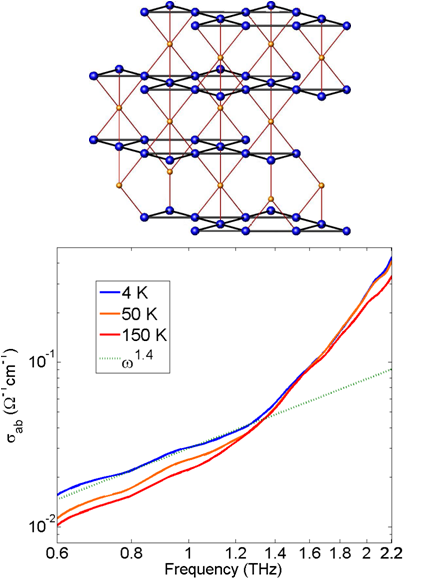
Observation of suppressed terahertz absorption in photoexcited graphene.
Graphene, a two-dimensional honeycomb lattice of carbon atoms, is an attractive material for use in fast optoelectronic devices due to its broadband optical absorption and high electron mobility. It is crucial to understand the mechanisms of electron energy relaxation on ultrashort timescales in order to realize these applications. In this work, we apply optical pump - terahertz probe spectroscopy to study the ultrafast response of electrons to an intense light pulse. We find a transient decrease in the electron conductivity, in stark contrast to the response observed in conventional semiconductors.
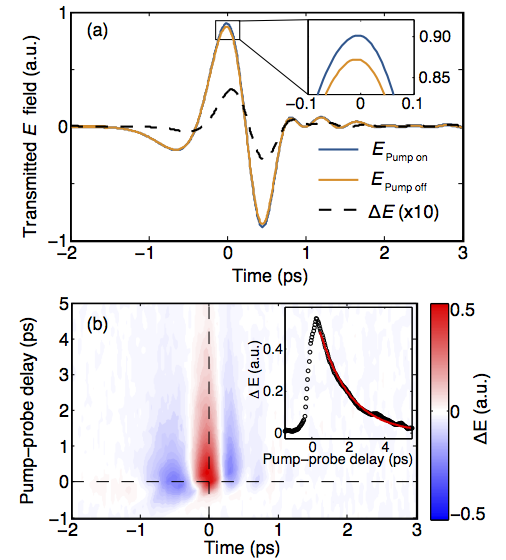
Fluctuating charge-density waves in a cuprate superconductor.
A major stumbling block in the understanding of high temperature superconductivity (HTS) is its concurrent presence with a short-lived fluctuating Charge Density Wave (CDW) state. In this work we use ultrafast transient grating spectroscopy to generate collective modes (amplitudon and phason) of the CDW state in LSCO thin films. This allows us to not only detect the dynamic CDW state but also measure its lifetime and understand its behavior with changing temperature. By applying this technique to films with different carrier dopings we establish that the fluctuating CDW state probably competes with HTS.
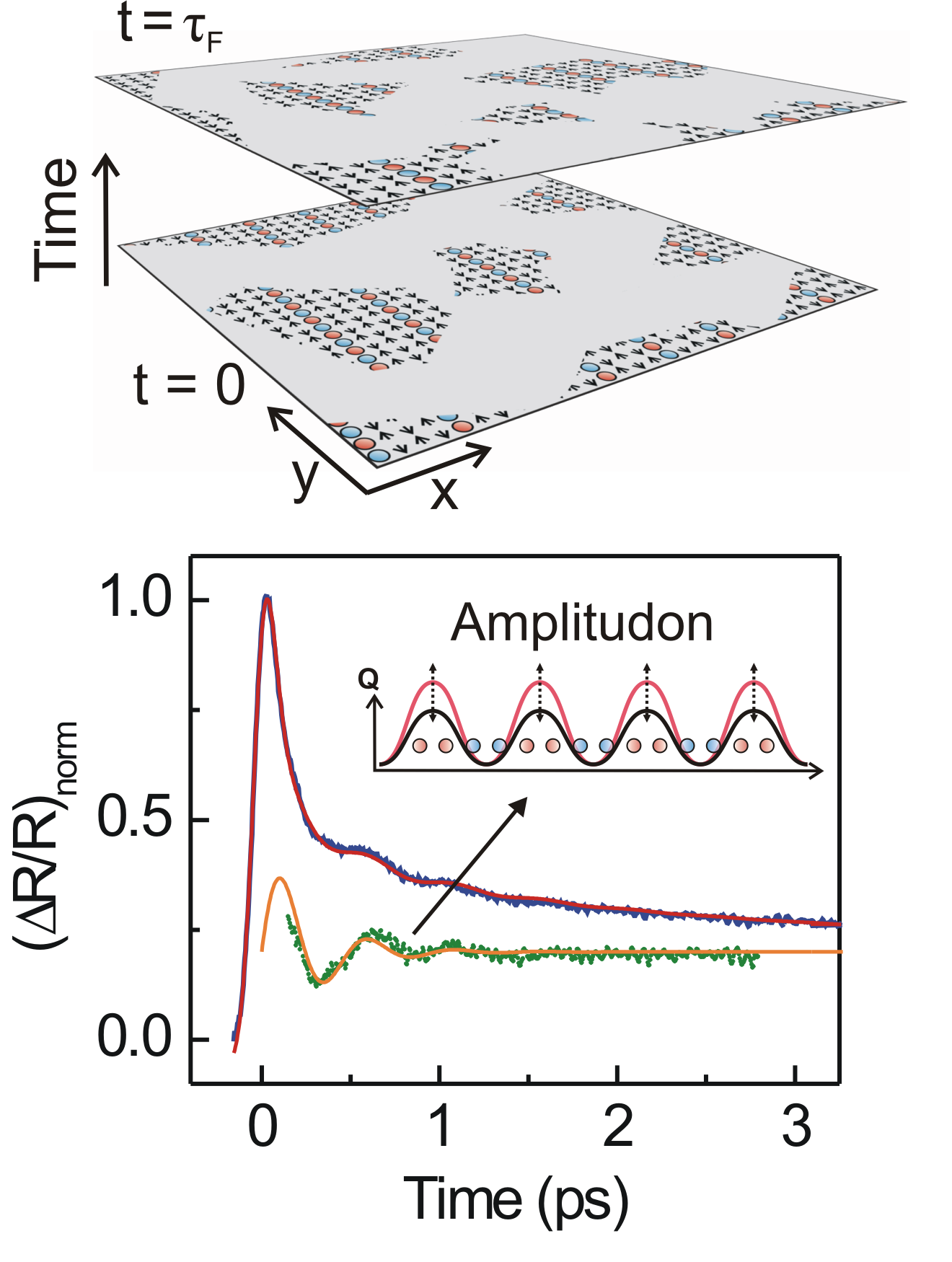
Measurement of intrinsic Dirac fermion cooling on the surface of the topological insulator Bi2Se3 using time-resolved and angle-resolved photoemission spectroscopy.
How the surface electrons of a topological insulator interact with bulk electrons and phonons is important for future electronics and computers that may employ these electrons as information carriers. In this work, we use time- and angle-resolved photoemission spectroscopy developed in our lab to capture 3D movies of their motion in the energy-momentum space with sub-picosecond time resolution. This technique allows us to observe the interaction between surface and bulk electrons at high temperatures.
-
Highlighted in Physics
Observation of a metal-to-insulator transition with both Mott-Hubbard and Slater characteristics in Sr2IrO4 from time-resolved photo-carrier dynamics.
Iridates are novel electronic systems in which spin-orbit coupling, electronic bandwidth and on-site Coulomb interactions occur on comparable energy scales. It is important to understand the electronic structure of these Iridates to realize exotic quantum phenomena such as correlated topological insulators. In this work, we use time-resolved optical spectroscopy to study the temperature evolution of the electronic structure of Sr2IrO4. We find a clear change in the ultrafast dynamics across TN indicating a gap opening concomitant with antiferromagnetic order.
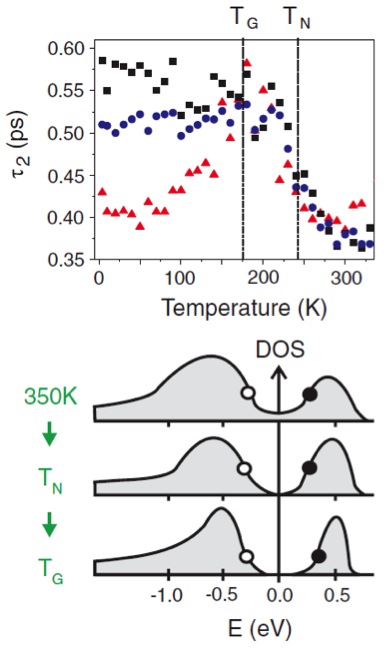
Control over topological insulator photocurrents with light polarization.
Electrons on the surface of a topological insulator have the unique property that their spin orientation depends on their direction of propagation. We show in this work that the the indirect coupling of light and spin in the topological insualtor Bi2Se3 results in current flow confined to the surface. By changing the polarization of the light, the current direction can be controlled.
-
Highlighted in Nature Photonics
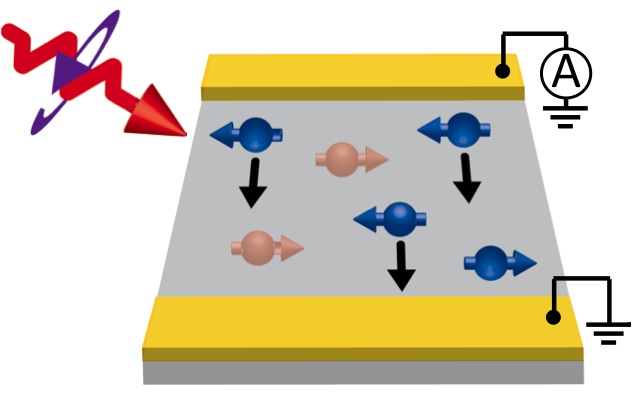
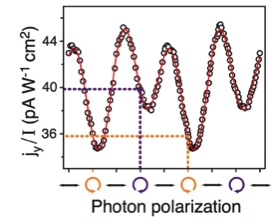
Observation of a Warped Helical Spin Texture in Bi2Se3 from Circular Dichroism Angle-Resolved Photoemission Spectroscopy.
Topological insulators are characterized by surface states where the electron spin is locked perpendicular to its momentum. We show in this work that performing ARPES with circularly polarized light is a sensitive measure of the spin polarization of the surface states. We discover in n-doped Bi2Se3 that the spin distribution warps from the expected perpendicular spin-momentum locking in both the in-plane and out-of-plane directions.
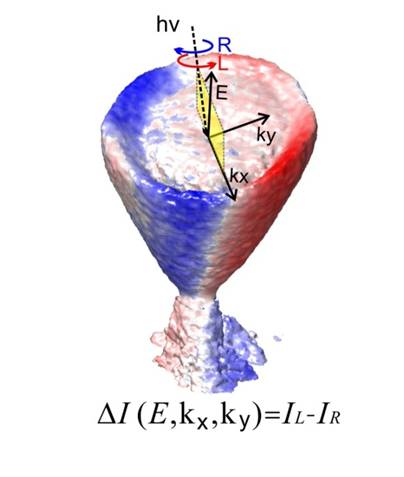
Selective Probing of Photoinduced Charge and Spin Dynamics in the Bulk and Surface of a Topological Insulator.
The spin-polarized electrons on the surface of a topological insulator (TI) provide a promising platform for optical and spintronic devices. To achieve this, it is important to understand the dynamics of surface electrons in a TI in response to light while distinguishing this response from that of bulk electrons. In this work, we use time-resolved fundamental and second-harmonic optical pump-probe measurements to selectively distinguish between bulk and surface response. We optically induce a net transient spin density and resolve different relaxation processes for both bulk and surface electrons following photo-excitation.

Nonlinear optical probe of tunable surface electrons on a topological insulator.
The topological insulator is a new phase of quantum matter that hosts conducting electrons on all of its surfaces that are robust against backscattering. However, isolating the surface electrical response has proven difficult owing to the proponderance of conducting electrons in the bulk of these materials. In this work, we demonstrate that the second harmonic generation of light off the the topological insulator Bi2Se3 is sensitive to the surface crystal structure, surface Fermi level, and time-reversal-symmetry breaking.

Band-dependent quasiparticle dynamics in the hole-doped Ba-122 iron pnictides.
Iron-pnictide superconductivity exists on five bands, complicating efforts by
experimentalists and theorists to gain definitive insight into the nature of
pairing. Of utmost importance are the symmetry of the superconducting gap and
the interrelationship of the various bands with one another. In this article,
we describe how pump-probe spectroscopy can be used to probe relaxation of a
photoexcited sample back to its superconducting state with a view towards the
separate dynamics occuring in each of the bands. Our results point towards
fully gapped hole bands on the inner portions of the Brillouin zone, and either
nodal or highly anisotropic electron bands near the zone boundary.
-
Highlighted in Nature Materials
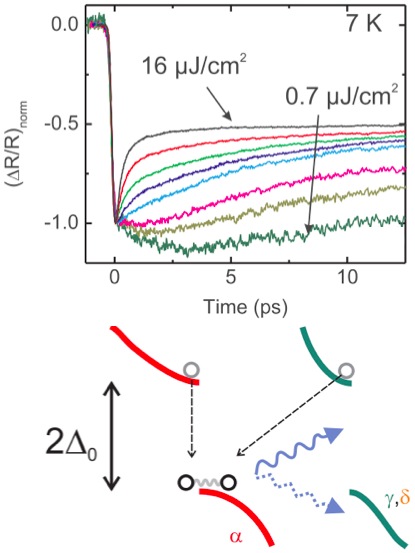
© 2013 Nuh Gedik. All Rights Reserved


